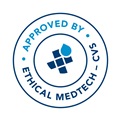
Arman Afrashi
Atasaglik Hospital
Turkey
Title: Pharyngolateral ferromagnetic prosthesis (PFP) for treatment of obstructive sleep apnea
Biography
Biography: Arman Afrashi
Abstract
Obstructive sleep apnea is a disease consisting of episodes of partial or complete closure of the upper airway that occur during sleep and lead to breathing cessation defined as a period of apnea more than 10 s. Symptom include restlessness, snoring, recurrent awakening, morning headache and excessive day time sleepiness. Diagnosis of obstructive sleep apnea is based on sleep history and polysomnography. Today the major treatment methods are continuous positive airway pressure, weight loss, positional therapy, oral appliances and different surgical procedures. In all surgical procedures except maxillomandibular advancement, the main problem is failure of preventing the collapse of lateral pharyngeal wall. In this designed new technique pharyngolateral ferromagnetic prosthesis will prevent the collapse of lateral pharyngeal wall during sleep. Pharyngolateral ferromagnetic prosthesis contains two parts for each side of the pharyngeal part of the neck. 1. Internal part of prosthesis contains a fragmented thin part of a ferromagnetic material such as Iron (Fe), coated with biocompatible Silicone or another biocompatible material 2. External part of prosthesis contains a natural magnet with power more than 10,000 Gauss. The external part of pharyngolateral ferromagnetic prosthesis will use only during sleep in external part of the neck. Surgical technique: patient should be in supine position and under general anesthesia during surgery. After inserting Davis-Boyle mouth gag, surgeon should make a 3-cm long incision vertically in lateral wall of pharynx at the level of base of the tongue. Then surgeon should make dissection under mucosal and submucosal layers toward hypopharynx. After that he/she should insert the internal part of prosthesis and at the end close the incision . Then surgeon could perform the same procedure to the opposite side of the neck or perform unilaterally. A few days after surgery patient should use the external part of the prosthesis in both sides of the neck during sleep. The magnetic power of external part of prosthesis will pull the internal part of prosthesis and lateral hypopharyngeal wall together and this will prevent the collapse of lateral pharyngeal wall and obstructive attacks.

